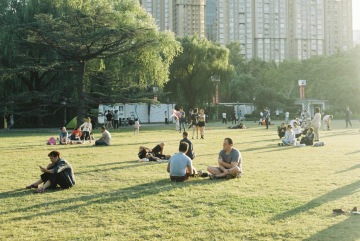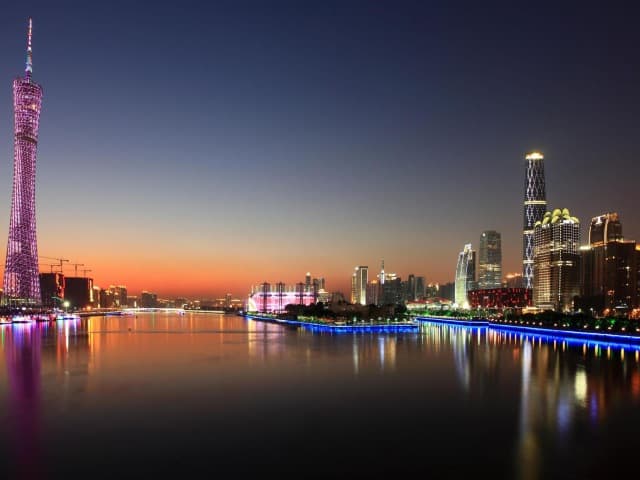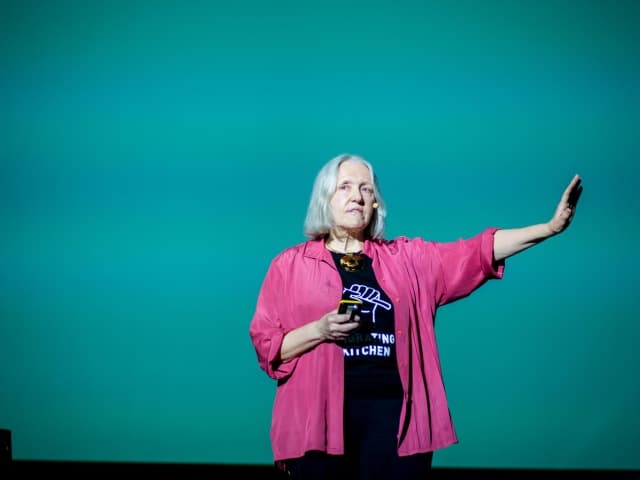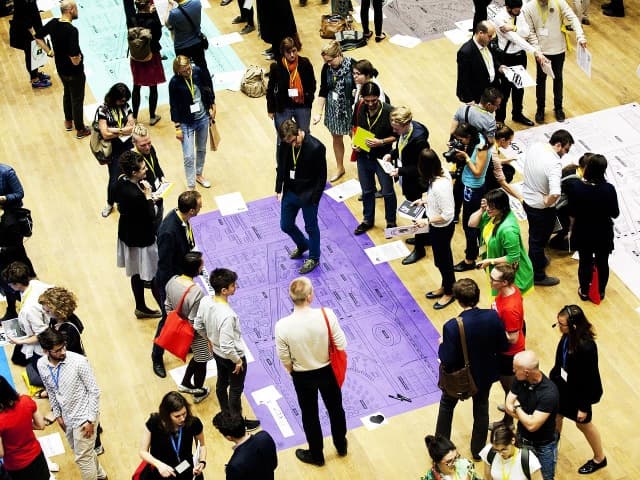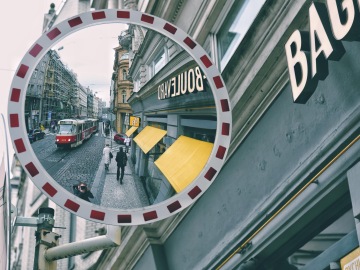
In 4,400 Days – How Smart Will Prague Be?
The year 2030 is roughly 4,400 days from now. In urban planning thinking, this isn’t the future, this is tomorrow. Martin Barry for Forbes Next.
In my circles, there is little doubt that cities will continue to be humankind’s greatest invention, nor is there doubt that we will continue to populate our cities at unprecedented rates.
The question about 2030 is important in the context of this statement, as it is the mission of Prague's Mayor Krnacova and Smart Prague to “make Prague a real smart city by 2030.” What does it mean to be smart, especially in Prague? Let’s take a closer look.
At the core, technology can enable a city to grow sustainably, governments to manage their services and infrastructure more efficiently, businesses to connect faster to the global economy, and citizens to have high-speed access with more power to participate in municipal governance and improve their own lives. For it to work, cities need to encourage their citizens become early adopters of new technology and need to give them the tools and Internet speed to do so.
Where does Prague fit, globally, when benchmarked against other “smart” cities, what is the city doing well, and what can be done better? Spoiler alert: Prague isn’t doing well when compared to other cities, but they realize that and are on the move. So, let’s look around to see where the world’s leading cities are on these issues, and take a look under the hood here at home in Prague to see what’s going right, and wrong.
First, what makes a city “smart”? The answer has broadened considerably over the years as we’ve understood how technology and sustainable urban solutions can improve the efficiency and reduce the carbon footprint of a city and it’s inhabitants. The so-called ‘smartest’ cities have very clear targets and implement plans quickly with broad private and civic sector incentives to hit those targets.
Importantly, no city can answer this question the same way. Those cities that excel beyond their regional and global competitors are the ones that have a clear vision and the political muscle and foresight to implement it. Cities need to know exactly where they want to go, not drift there.
Leadership and vision is the only consistent, determining factor that sets one city apart from the rest. Investing in buzzwords like “smart” will not attract more business, it will not encourage a vibrant SME and startup ecosystem, it will not get the garbage recycled quicker with less carbon output, or improve traffic and it certainly won’t improve people’s lives.
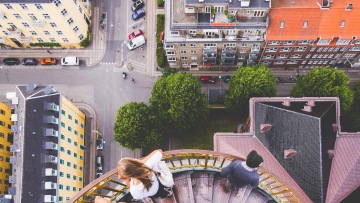
Copenhagen, just a few hours to the north aims to be 100% carbon neutral by 2025.
In Stockholm, 52% of all energy produced is renewable. In Tokyo, a highly efficient and easy to use rail system manages over 100 train lines and 14 billion passengers a year, making it easy for business to operate and citizens to travel without cars. Anecdotally, it is also one of the quietest cities in the world, adding a very important indicator to a very high quality of life.
Speaking of transport, Singapore boasts the most efficient and modern transport system in the world with one of the lowest car ownership rates thanks to high taxes on petrol and car purchases. Amsterdam focus on SMEs and startups makes it one of the EU’s most innovative, and wealthy cities. Helsinki, in 2014, implemented an integrated transport app connecting all forms of shared transport from bike, metro, bus, tram and auto. These cities are clearly decades ahead of Prague.
Easy Park Group has one of the most comprehensive smart city rankings in the world. While I generally dislike city rankings, I like the data sets and analytical process they use. Prague, which doesn’t typically break the top 50 in any type of global ranking (except tourism), sits at #72 on Easy Park’s ranking.
The City can move up the chart fairly quickly as we enter the next phase of being smart. The city is already quite livable thanks to the historical planning work since Charles IV and a reliable metro, bus and tram system. Small changes in mobility can improve lives. Big changes will come with autonomous vehicles and this is where the City needs help from the private sector to help predict and model streets without the need for parking spaces or excessive lanes.
Prague needs to build a metro to the airport. The Prague airport is one of the most depressing and empty terminals that I’ve been to in the world – and I’ve been in dozens of airports, hundreds of times. The lack of connectivity is partially to blame.
Work with the private sector to upgrade the 4G network immediately and encourage more smartphone usage. These two factors alone are a bell-weather for how innovative a city is.
Smart Prague has launched a call for smart ideas to improve the city. Next, they need to respond to ideas.
Several of our partners have indicated they do not even confirm receipt of submissions. Short term wins would focus on attracting an experienced and easy-to-use car sharing network like Daimler’s Car2Go, dedicate parking for them in each district and work to limit parking for private vehicles, or at least raise and implement fines for parking on sidewalks or green areas all over the city. Easy.
Digital or smart governance is a bit more challenging to implement. A digital dashboard should be used to pull all city utilities under one publicly owned management company, or system. It should be the cities’ responsibility to aggregate all utility data across systems, not the private sector – which currently does so, out of necessity.
If in 4,400 days we are going to be smart in Prague – we should have a task force group under or alongside IPR to work with the private and civic sector on well-considered pilot projects, and eliminate knowledge or political barriers to their implementation. We will need specific targets, and high profile companies willing to invest in the plan.
It’s not easy, especially in Prague where there are many barriers to political consensus. But, we know what to do – let’s just do it. If someone doesn’t know how or doesn’t want to try, let’s ask others that do and will. 4,400 days is not that many days.
Finally, let’s stop calling it a “smart city” and simply call it smart planning.
This opinion by Martin Barry was originally published in Forbes Next magazine, February 2017 issue, in Czech language.
Related Stories
Five Talks On Using Design for Social Impact
Socially conscious designers leverage economic, environmental, political and cultural factors and consider them in their efforts to improve the livability of the built environment.
Six Talks on Designing Cities to Include Greenspace
Cities benefit tremendously from the incorporation of greenspace, a connection to nature that is an arena to cultivate community.
Four Talks on Smart Cities: Do They Enhance or Weaponize our Environment
Technology is embedded in contemporary cities. From surveillance cameras to street lights, architects, scientists, planners, and engineers are finding new ways to streamline urban environments to improve the quality of life. Yet, some worry that increasing reliance on technology could lead to its potential abuse, especially when it comes to personal privacy.
Women Make Cities: Five Talks by Women Who Are Shaping the Urban Environment
Within the fields of architecture and urban planning, women are making their case for creating built environments that serve all genders. To close the gap of gender inequality and make spaces more inclusive and safe for women, the unique perspective provided by these speakers is essential to augmenting our idea of design. To move towards more inclusive cities, women must be at the forefront of change.
Related Talks
Creating Common Ground with Michael Kimmelman | reSITE City Talks
Michael Kimmelman, architecture critic for the New York Times, speaks to reSITE about how architects are responsible for creating healthy cities to address climate change, refugees, and urbanisation. In conversation with urban planners and designers, architects can create resilient neighborhoods and cities.
Boom Towns are Immigration Towns with Michael Kimmelman
Michael Kimmelman, architecture critic for the New York Times, uses Stuttgart, Mexico City, and Guangzhou as examples of ways cities have handled an influx of migrants and how the cities have adapted or not adapted differently. The current issues in these cities differ based on location, situation of incoming migrants, and how well the city has handled new arrivals, with Stuttgart presented as a model city for migrant reception.
Saskia Sassen: City is an Extraordinary Animal
Saskia Sassen, professor of sociology at Columbia University, discusses the migrant experience relating to land use and the urban habitat. She focuses on the privatizing and corporatizing of modern cities and how these trends affect the people living in cities, especially disadvantaged and ignored populations.
Can we Gamify Urban Design with Ekim Tam + Play the City
Ekim Tan, inventor of Play the City, moderated and listened to participants discuss the experience of their city, including the urban issues they faced and solutions to problems. At reSITE 2016, attendees played a large scale "Play the City" game where they were assigned roles and simulated making decisions and reacting to events in a city.


